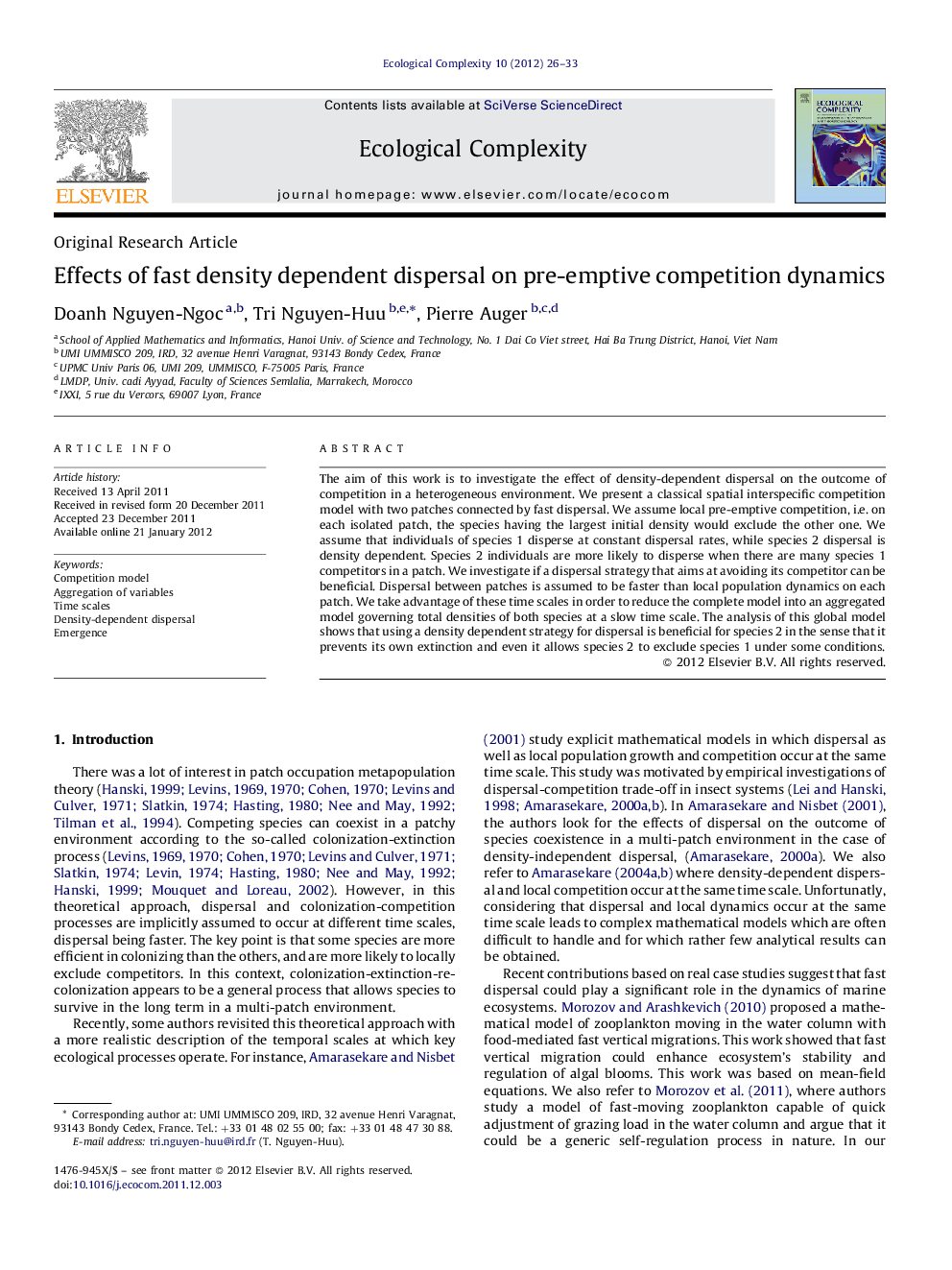| Article ID | Journal | Published Year | Pages | File Type |
|---|---|---|---|---|
| 4372516 | Ecological Complexity | 2012 | 8 Pages |
The aim of this work is to investigate the effect of density-dependent dispersal on the outcome of competition in a heterogeneous environment. We present a classical spatial interspecific competition model with two patches connected by fast dispersal. We assume local pre-emptive competition, i.e. on each isolated patch, the species having the largest initial density would exclude the other one. We assume that individuals of species 1 disperse at constant dispersal rates, while species 2 dispersal is density dependent. Species 2 individuals are more likely to disperse when there are many species 1 competitors in a patch. We investigate if a dispersal strategy that aims at avoiding its competitor can be beneficial. Dispersal between patches is assumed to be faster than local population dynamics on each patch. We take advantage of these time scales in order to reduce the complete model into an aggregated model governing total densities of both species at a slow time scale. The analysis of this global model shows that using a density dependent strategy for dispersal is beneficial for species 2 in the sense that it prevents its own extinction and even it allows species 2 to exclude species 1 under some conditions.
► We build a spatially explicit model involving pre-emptive competition over patches connected by dispersal. ► We use aggregation of variables methods to reduce the complexity of the model. ► Density dependent dispersal enhance stability for one or both species.
